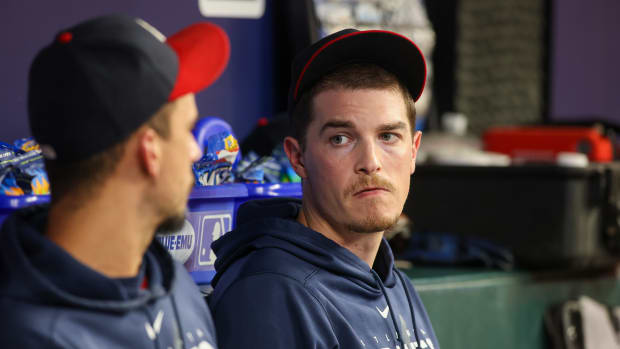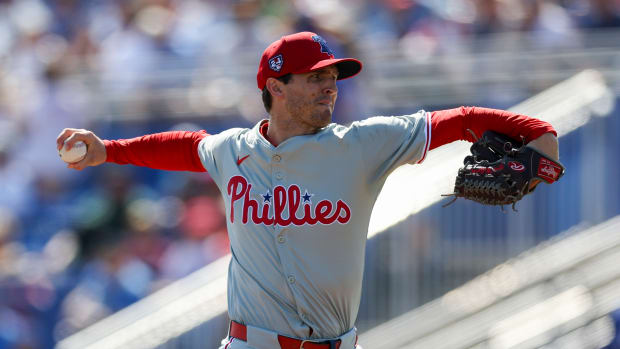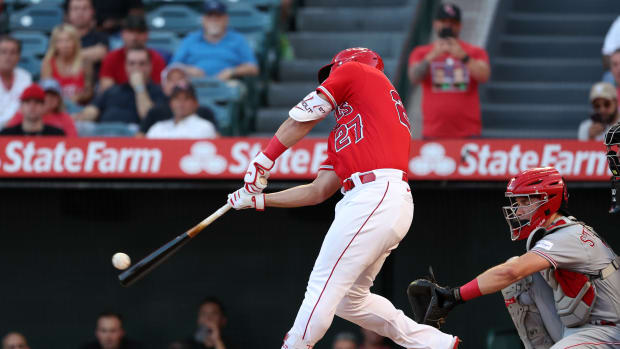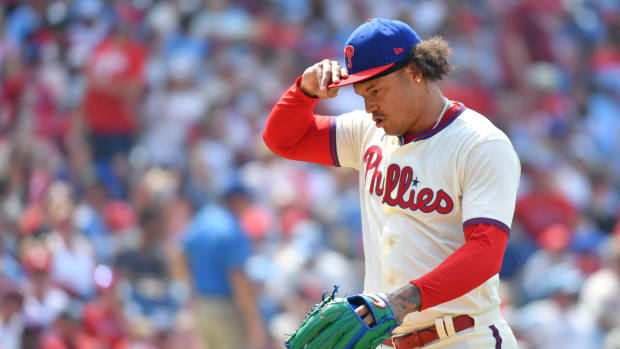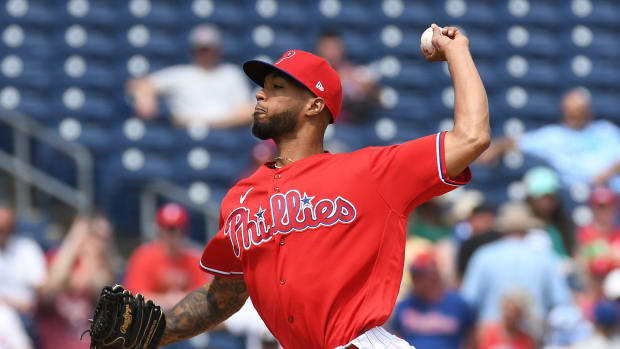Phillies Made History By Hiring First Female Scout in MLB
What was it that first attracted you to the game of baseball? The Philadelphia Phillies?
Was it the crack of the bat, an improbable catch in the outfield, taking in a game at the ballpark?
For Edith Houghton, well, it was just about everything.
Houghton was born in February 1912 in Philadelphia. At about five-years-old, Edith's large family—comprised of nine siblings—moved to a new house directly across the street from a baseball diamond. At that point, Houghton took to the sport immediately. If she wasn't watching night games on the field from her bedroom window, she was partaking in a pick-up game with kids from the neighborhood.
It was in these casual games where Houghton's love of baseball would grow and she would find that shortstop was her natural position. When she was just ten-years-old, Houghton was brought to the attention of the Philadelphia Bobbies, a semi-pro team for non-working girls, after seeing her hitting and fielding displays on the field before games.
Although the Bobbies typically employed women and girls between the ages of 13-22, Houghton was too impressive for them to pass up. Houghton was so young, even her uniform didn't fit her properly.
In 1925, Houghton traveled with the Bobbies to Japan where they participated in 15 games against men's college teams. Not only did Houghton catch the attention of those in the United States, but also delighted the people of Japan. In a game against the Nippon Dental College team, she tagged a baserunner out by using the famous Honus Wagner "hidden ball" stunt, which received special praise.
Aside from Houghton, the Bobbies were not a particularly good baseball team, causing Edith to move on from the club. She played for a multitude of teams in Philadelphia, appearing in nearly every position on the diamond, including pitcher and catcher. Houghton's love of the game and desire to play took her to New York, Texas, and Oklahoma.
By the time she was 20, options for girls in baseball were dwindling, but Houghton could not be stopped. She requested a tryout for Fisher A.A.’s, a men’s semi-pro team in Philadelphia, and miraculously won a job playing first base.
But between the Great Depression and World War II in the U.S., Houghton found herself without work and instead volunteered for WAVES (Women Accepted for Volunteer Emergency Service) and worked as a storekeeper in the supplies and accounts department after the attack on Pearl Harbor. When the war ended, Houghton traveled back to Philadelphia and began working as a glassware buyer for a wholesaler.
Baseball eventually found its way back to Edith, though. And her talent was still there, having batted nearly .800 despite having a broken ankle and a bout of appendicitis when she played for the department's team during the war. She also found time to manage the on-base women's softball team during that period.
We now arrive in 1946. Houghton was 34-years-old and reaching an age in which she was too old to play the game. Still, she wanted to be involved in the sport she loved. It was then that she approached Bob Carpenter, owner of the last place Philadelphia Phillies, asking to be a scout for the club. It was a bold move at the time, considering there had never been a female scout at the major league level before. In fact, there were barely any women involved at all.
A few days after their meeting, Houghton received a call that Philadelphia would like to hire her as a scout. Of course, the media at the time criticized and mocked the decision, calling it a "a desperate move by a desperate team" and "since the Phillies had often played like a bunch of Girl Scouts, they might as well take the drastic step of hiring a girl scout in a bid to get out of the basement of the National League."
Those comments didn't bother Houghton though. For she was certain that she would bring a "wave of talent" to Philadelphia. Carpenter responded to the comments stating that:
"There’s no reason why a woman shouldn’t be just as good a judge of a ballplayer as a man. Some of them know a lot more about baseball."
Houghton scouted hundreds of ballplayers over the next six years and signed 16 of them. Unfortunately, none made it to the majors, but two of them reached Class B-ball. Because scouting is such a cutthroat activity, she said that if she felt any players had talent "you can bet your buttons ten others are after him, too."
Houghton left the Phillies in 1952 and rejoined the Navy, eventually retiring as a Chief Petty Officer in 1972. She transferred from Philadelphia to Florida, where she would spend the rest of her life. Edith passed away just days before her 101st birthday in 2013.
Edith Houghton's love of the game and determination serve as an inspiration even in modern day baseball. She took a chance, and made history as the first woman scout for a major league team. Houghton helped pave the way for all women in careers in baseball.
More From SI's Inside The Phillies:
- Phillies Inch Closer To Bringing Superstar Center Fielder To Philadelphia
- Exclusive: Phillies Minor Leaguer Voices Thoughts on Lockout
- 18-Year-Old Phillies Prospect is Making History
- How did Philadelphia end up with Citizens Bank Park?
- How the Phillie Phanatic Came to be America's Favorite Sports Mascot
- Why the Phillies Bench Will Determine Their Playoff Hopes
- Predicting the Phillies 2022 Opening Day Roster
- Picking the Phillies' All-Time Single Season Lineup
- Two Former Philadelphia Phillies Among Those Who Testified in Tyler Skaggs Trial
- The Sad Story of the Phillies' First Black Ballplayer
Make sure to follow Inside the Phillies on Facebook and Twitter!

